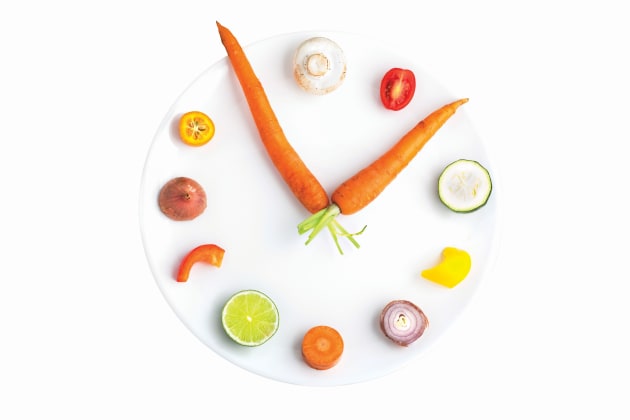Eating: there's no one right way

It’s confession time. One of the most annoying things about being a dietitian for 20 years is that the more I meet and speak with people, the more I come to understand that there is no one right way of eating for everyone, and that there’s so so much about food, eating and nutrition that we don’t know enough about. Sigh. So, instead of pretending that we know more than we do, I’ve come to terms with the discomfort and internal eye roll that happens when someone asks a question and my answer is “well, it depends…” (I can see your eye roll from here!) The really great part about this for me is that rather than getting all down on the unknown, I choose to see it as an opportunity to support people to more deeply understand their own experience, to understand what works best for you, not someone else. As a dietitian my role is helping dancers nourish themselves in a way that supports not only great performance, but also optimises all areas of wellbeing.
I’ll give you a good example of a question I’m asked regularly by dancers: “How often should I be eating?” Actually, I lie, the more common question is “how much should I be eating?” but that one is even more complex so let’s stick with how often.
When I talk about the importance of “eating regularly” with dancers, I frame it in the context of fuelling your body to meet demands in a way that also accommodates for variations in schedule, routine, intensity and lifestyle. Let’s break it into steps, starting with broadly, then working towards specifics.
Step 1 - Schedule over the week
The reason I suggest you look at your week, rather than one day in isolation, is because our bodies don’t work in 24 hour time periods, even though it sometimes seems that way. Looking at your schedule over the week can help you in a few important ways. First, you can do any meal planning that might help minimise the “what the heck am I going to have for dinner?” thoughts, keep you organised and helps you plan your shopping. It also helps with preventing any over-hungry eating which can lead to patterns of under-eating and over-eating that can be disruptive, disordered and unhelpful.*
What are you doing in the week? Is it your regular schedule? Is there anything else you’ll need to take into account (eg. physio, pilates, family event, etc)? Will you be around home most of the time, or is there a bit of travel? Are you taking all classes? Just having an overall view of the week ahead allows you to forsee things that may get in the way, or help you stay on top of things.
Step 2 - Blocks in the day
A good starting point is to think about your day in “blocks” of time and work from there. For some people, a “block” will be from 7am-11am, 12-3pm, 4-6pm, meaning that meals and snacks will fit either side of these blocks. This would differ from someone whose “blocks” look more like 9-12pm, 12:30-2pm, 4-5:30pm or even 9-11am, 12-2pm, 3-5pm. Seeing your day in blocks can help you develop the idea of structuring appropriately sized meals and snacks around your classes in a way that keeps you both comfortable and well fuelled.
Step 3 - Meeting your needs
Next, take a look at how long your breaks are in between and the relative intensity of your classes. There’s no need to see it as “energy in, energy out” (it doesn’t exactly work like that) but having an overall picture of where you can fit things in can be helpful. For example, if you have a low intensity class, a half hour break, then a high intensity class, you’re going to have to think carefully about your food choices, so you don’t end up feeling sick. At the same time, you’ll have to be well-fuelled to stay at your best! The longer your breaks, the more I suggest you aim for a filling, nourishing meal rather than a smaller snack. 1.5 hours between two classes somewhere in the day is ideal (but not always realistic) for fuelling. Some examples might be leftovers, a large salad with protein (such as chicken/salmon/tuna), grains (quinoa, rice, noodles) and salad vegetables or a toasted sandwich. And water -- hydration is really important!
For shorter breaks between active classes, snacks might be more useful as a top-me-up to keep you going until a longer break. Nuts, crackers and cheese, boiled egg, fruit, natural yoghurt (usually a couple of these during a shorter break) might feel like a good option alongside a good drink of water.
In summary, there are days you may be able to eat three times in the day. Work around your schedule and plan ahead. And others where more frequent eating is possible, at which time I suggest bringing additional snacks to top up energy while you can. Ideally, I suggest a minimum of three meals and, when possible, two to three snack times in the day. For teens, it’s difficult to meet your needs with only three meals alongside the amount of activity you’re doing, so you’ll need to be even more organised! The less time you have for breaks, I suggest a munch-talk-rest routine so you can prioritise re-fuelling your body before the next class. A nourishing meal at the end of the day, followed by another snack before bed, can round things off, and help you recover ready to start again the next day.
This article first appeared in the Feb/Mar 2018 issue of 'Dance Australia'. Read it first in print!


